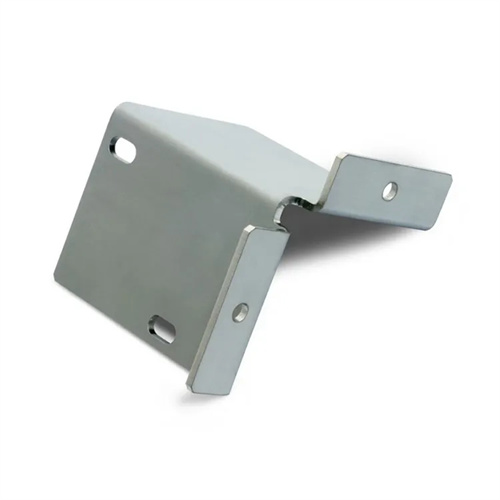Layout Design of Multi-station Progressive Die
Layout design for multi-station progressive dies is a key factor in determining mold efficiency and product quality. Its core is to rationally arrange the position and sequence of each process on the strip to maximize material utilization, smooth process transitions, and stabilize the stamping process. Layout design requires comprehensive consideration of part shape, number of processes, feed direction, and mold structure. By combining computer-aided design with empirical optimization, a scientific and reasonable layout plan is developed, providing a basis for subsequent mold design and manufacturing.

The primary principle of layout design is to maximize material utilization. By optimizing the arrangement of parts on the strip, overlap and waste can be reduced. Common layout methods include straight, diagonal, aligned, and staggered. Straight layout is suitable for long, rectangular parts, achieving a material utilization rate of 75%-85%. Diagonal layout is suitable for parts with sharp corners (such as triangles and diamonds). By rotating them by a certain angle (30°-60°), material waste at these corners can be avoided, increasing utilization by 5%-10%. Aligned layout is suitable for symmetrical parts. Arranging two parts symmetrically with a shared overlap can achieve a utilization rate of 80%-90%. Staggered layout is suitable for round or square parts. By staggering the upper and lower rows to allow the gaps between adjacent parts to overlap, utilization rates can reach as high as 92%. For example, using staggered layout for a 10mm diameter circular gasket, material utilization can be increased from 70% in straight layout to 88%, allowing the production of 15-20 additional parts per meter of strip.

The rational arrangement of process sequences is the core of layout design, adhering to the principle of “punching first, then forming, simple first, then complex.” Punching (especially small and irregular-shaped holes) should be performed at an early stage to avoid displacement caused by subsequent forming processes. Forming processes such as bending and drawing should be arranged from smallest to largest deformation, gradually increasing the amount of deformation. For example, pre-bending should precede final bending, or shallow drawing should precede deep drawing. Trimming and separating processes should be performed at the last stage to ensure that the parts are formed before being separated from the strip. For complex parts, transition processes (such as pre-forming and shaping) are required to prevent material fracture due to excessive deformation. For example, the layout sequence for a cylindrical part with a flange is: punching → initial drawing → secondary drawing → flange shaping → blanking. Each process should be separated by one or two empty stations to minimize interference between processes.

Determining the overlap and stepover are key parameters for ensuring nesting stability. Overlap is the excess material between parts and at the edges of the strip. Its width is determined based on material thickness, part shape, and feeding method: 1.5-3mm for manual feeding and 0.5-1.5mm for automatic feeding. Thin materials (t < 0.5mm) require a smaller overlap, while thick materials (t > 2mm) require a larger overlap. For irregularly shaped parts, the overlap is 20%-30% larger than for round parts to prevent strip tearing during feeding. Stepover is the distance between adjacent workstations and is equal to the maximum dimension of the part along the feeding direction plus the overlap. Accuracy must be maintained within ±0.01mm, achieved using side cutters or servo feeding. For multi-row nesting (such as double or triple rows), the total strip width must be calculated as the sum of the widths of each row + the overlap between rows × (number of rows – 1) to ensure smooth strip feeding into the mold.

The positioning method and the setting of auxiliary workstations are important supplements to layout design. In order to ensure the feeding accuracy, positioning stations need to be set up in the layout. The early stations use side blades to punch the edge of the material to form a fixed-distance gap; subsequent stations insert guide pins into pre-punched holes to achieve precise positioning. The number of guide pins increases with the number of stations (generally 1 is added for every 3-5 stations). For thin materials that are easy to deform (t<0.3mm), a floating station needs to be set up to lift the strip through the ejector pin to avoid scratches caused by friction with the lower die; for the drawing process, flattening stations need to be set up before and after to eliminate the wavy defects of the strip; for layout with a lot of waste, a waste cutting station needs to be set up to cut the long waste into small sections for easy discharge. Although these auxiliary stations are not directly involved in part forming, they can significantly improve the stability of the stamping process.

Dynamic simulation and optimization of nesting patterns are essential tools for modern nesting design. Using CAD/CAE software (such as AutoForm and UG), nesting models are created to simulate the deformation of the strip at each station, analyzing material flow, stress distribution, and thickness variations to predict potential defects such as wrinkling and cracking. Based on the simulation results, nesting parameters are adjusted, such as increasing the overlap in certain areas, adjusting the process sequence, or adding transition stations, until the optimal solution is achieved. For example, during a nesting design simulation for an automotive connector, it was discovered that bending at the fifth station caused the hole position at the third station to shift by 0.15mm. By repositioning the punching station two stations, the hole position deviation was controlled to within 0.03mm. After nesting optimization, trial punching is performed to verify the results, and fine-tuning is performed based on the actual punching results. Ultimately, a nesting solution suitable for production is developed, laying the foundation for efficient production of multi-station progressive dies.
